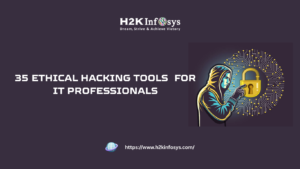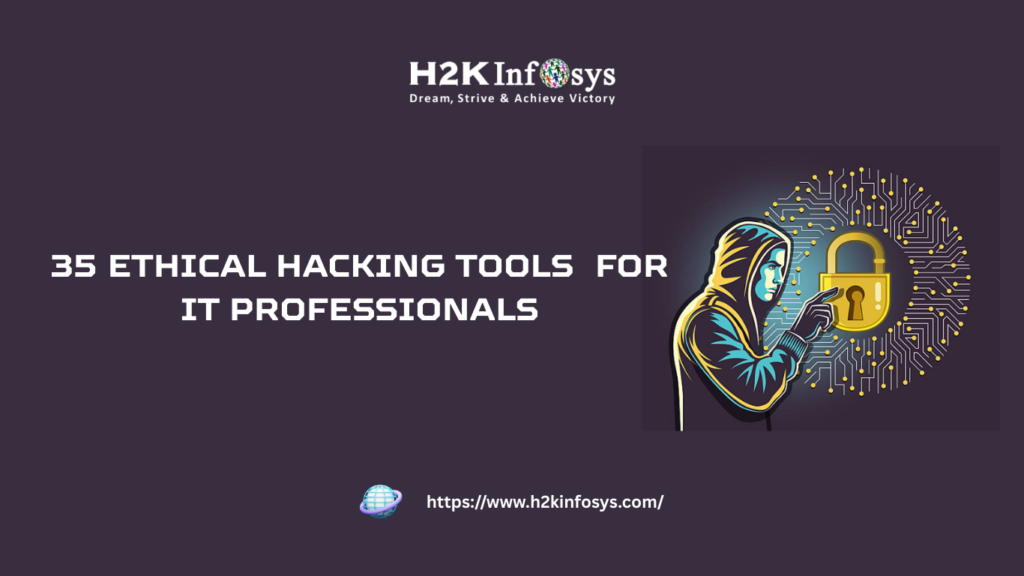Introduction: Detecting the Invisible Threat
Imagine waking up to discover your organization’s most confidential data has been exposed. The breach wasn’t obvious—it crept in silently, days or even weeks before. How do cyber security teams uncover such hidden threats? The answer lies in Indicators of Compromise, the digital evidence that reveals a breach has occurred.
In a digital world plagued by advanced persistent threats, ransomware, and stealthy attacks, recognizing Indicators of Compromise is a critical first step toward containment and response. At H2K Infosys, our Cyber security training and placement programs equip learners with the skills to identify these signs and take swift, informed action.
What are Indicators of Compromise?
Indicators of Compromise are pieces of forensic evidence that suggest a system has been infiltrated by a threat actor. These include suspicious files, unusual network traffic, unauthorized access logs, or unknown applications executing without permission.
In our cyber security course with placement, students learn that Indicators of Compromise act as warning signals left behind during or after a cyberattack. They help security professionals reconstruct the timeline of a breach and take action to prevent further damage.

Types of IOCs
There are multiple categories of Indicators of Compromise, each offering unique insights into an attack:
A. Network-based IOCs
- Communication with blacklisted IP addresses
- Irregular DNS queries
- Sudden spikes in outbound traffic
B. Host-based IOCs
- Unauthorized changes in system registries
- Modifications to startup scripts
- Login attempts from unexpected geolocations
C. File-based IOCs
- File hashes that match known malware
- Changes in file size or metadata
- Suspicious executable names
D. Email-based IOCs
- Phishing links
- Malicious file attachments
- Unusual sender domains
Understanding these categories helps learners in cyber security course and job placement programs recognize real-world cyberattack patterns.
Why Indicators of Compromise Matter
Indicators of Compromise are essential to any organization’s security posture. They serve multiple purposes:
- Early Detection: Identifying anomalies before full-scale breaches occur
- Breach Containment: Minimizing impact by quarantining infected assets
- Forensics: Providing clues to understand how the attack unfolded
According to a Verizon Data Breach Report, companies that utilized Indicators of Compromise in their monitoring protocols detected breaches 50% faster than those without such tools. Learning how to effectively use these indicators is core to our cyber security training courses.
Real-World Examples of Indicators of Compromise
A. SolarWinds Attack
Attackers injected malware into the Orion platform. The Indicators of Compromise included:
- Suspicious outbound connections
- Modified DLL files
- Registry keys not associated with the Orion platform
B. Colonial Pipeline Ransomware
Attack vectors were identified through:
- Unusual process creation
- Unauthorized login attempts
- Data exfiltration over encrypted channels
These incidents demonstrate why practical understanding of Indicators of Compromise is vital, a topic covered extensively in our cybersecurity training and placement curriculum.

How Security Teams Use Indicators of Compromise
Security teams rely on Indicators of Compromise to create a timeline of events and deploy countermeasures. Here’s the general workflow:
Step 1: Detection
Use SIEM tools to scan logs and detect potential IOCs.
Step 2: Validation
Confirm that the IOC reflects malicious activity and not a false positive.
Step 3: Response
Take action—block IPs, isolate infected machines, and stop data leaks.
Step 4: Remediation
Fix vulnerabilities exploited during the attack and apply security patches.
Hands-on training in these workflows is an essential part of our cyber security training near me offerings.
IOCs vs IOAs: Know the Difference
It’s essential to differentiate between Indicators of Compromise (IOCs) and Indicators of Attack (IOAs).
| Feature | IOCs – Indicators of Compromise | IOAs – Indicators of Attack |
| Timing | After the breach | During the attack |
| Focus | Results of an attack | Behavior patterns suggesting an attack |
| Use | Forensic analysis, threat hunting | Real-time prevention and detection |
Both are critical and often integrated into modern cyber security training courses to create a layered defense strategy.
How to Collect and Analyze Indicators of Compromise
Gathering Indicators of Compromise requires tools and strategic insight. Here’s how professionals do it:
Sources:
- Firewall logs
- Email security gateways
- Endpoint Detection and Response (EDR) systems
- Antivirus alerts
Analysis Process:
- Collect all relevant logs and alerts.
- Correlate the IOC with known threats using threat intelligence databases.
- Visualize IOC chains using tools like MITRE ATT&CK Navigator.
Our cyber security training and placement course includes live lab exercises for IOC analysis and threat mapping.
Industry Tools for IOC Detection
Here are industry-standard tools that help identify Indicators of Compromise:
| Tool | Use Case |
| Splunk | Log aggregation and search |
| ELK Stack | Scalable log analysis |
| YARA | Malware pattern matching |
| Wireshark | Network packet analysis |
| CrowdStrike Falcon | Endpoint threat intelligence |
Trainees in our Cyber security course with placement gain direct experience with these platforms during lab sessions.
Common Challenges with Indicators of Compromise
Even though Indicators of Compromise are invaluable, they come with challenges:
- False Positives: Can lead to alert fatigue
- Short Relevance Window: IOCs can become outdated as attackers evolve
- Isolated Evidence: One IOC might not be meaningful without context
That’s why cyber security course and job placement programs emphasize continuous monitoring and correlation across multiple sources.
Career Opportunities with IOC Knowledge
Expertise in identifying and managing Indicators of Compromise opens doors in multiple roles:
In-Demand Roles:
- Threat Intelligence Analyst
- Security Operations Center (SOC) Analyst
- Cyber Forensics Expert
- Incident Response Lead
Our cybersecurity training and placement programs include mock interviews and real-world projects aligned with these job profiles.
Key Takeaways
- Indicators of Compromise are digital clues pointing to system breaches.
- They come in various forms—files, logs, processes, and more.
- Real-world examples like SolarWinds and Colonial Pipeline highlight their relevance.
- Tools like Splunk and YARA are crucial for IOC detection.
- Practical experience with IOCs is core to success in any cyber security training and placement program.
Conclusion
Mastering Indicators of Compromise is not just about theory—it’s about learning to detect the undetectable, respond in real time, and prevent future breaches. These skills are crucial for anyone aspiring to become a successful cyber security professional.
Enroll now in H2K Infosys’ Cybersecurity training and placement program to gain real-world skills and accelerate your career.


























